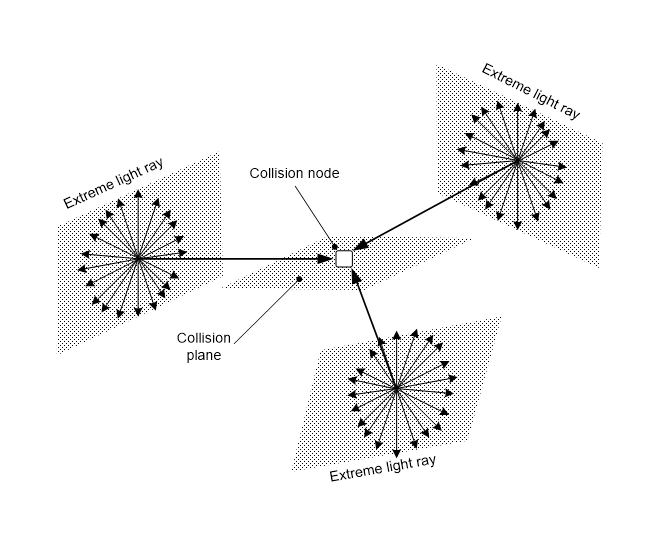Standard model quarks are fundamental particles unrelated to electrons or neutrinos that come in two types, up and down, with different charges. An up quark has a plus two-thirds charge and a down quark has a minus one-third charge, so two up and one down quark give a plus-one charge proton, the nucleus of Hydrogen, the first atom. Higher atoms have more protons, plus neutrons that are one up quark and two down quarks, so all atomic nuclei come from quarks.

If matter comes from colliding light, quarks should be the same, but all two-way collisions are electrons or neutrinos. The next possibility is that three rays of extreme light meet at a point in a plane, see Figure 4.9. Again, this is an unlikely event, but it must have occurred in the early plasma by the quantum law of all action.
This three-way collision has the symmetry that on any axis, one photon set is opposed by two others that project half their strength on that axis. Each ray then meets two others at half strength, in an electron type collision, but there isn’t enough light to fill all the channels of a plane through a point.
It follows that this interaction isn’t stable alone but quarks, unlike electrons, aren’t stable alone. Were it not so, this model would fail, but how then can semi-stable quarks become stable in the nucleus of an atom?